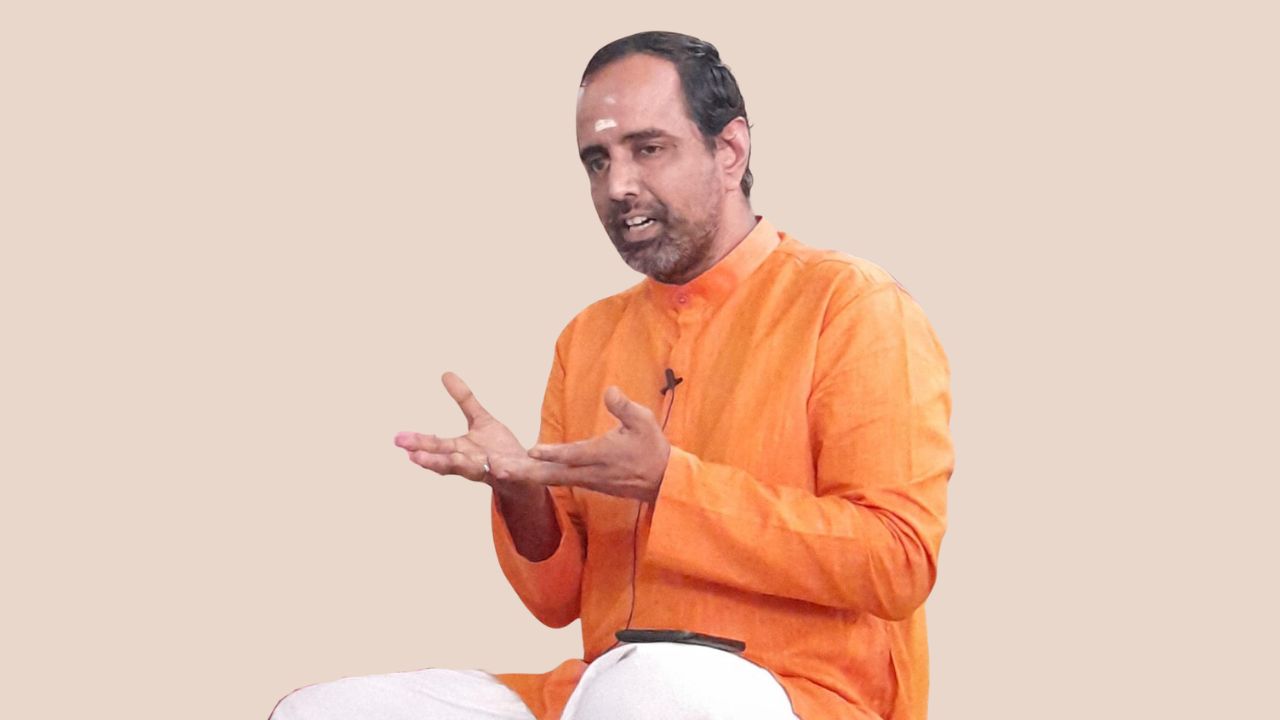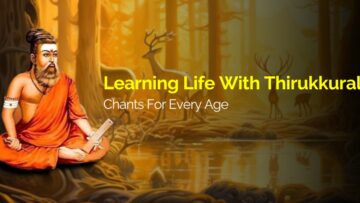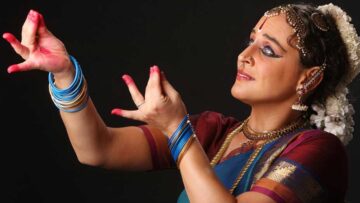Prof M Jayaraman, Dean Division of Yoga Spirituality, SVYASA Yoga University was recently felicitated by the Government of Tamil Nadu for his contribution to the Tamil language. One of his works includes a translation of the Hatayoga Pradeepika, published by Indic Academy. In this interview he speaks about his interest in translations and the implications of translating core Yoga texts from Sanskritam to Tamil.
What inspired you to translate core Yoga texts into Tamil? How does translation help in creating new audiences and meaning?
Yoga is now a global discipline. But in this global scenario we should not fail to cater the local. Global yet local should be the watch word. In this light when I looked at status of Tamil translations of core Yoga texts that are authentic, direct and scholarly, Tamil being my mother tongue, I saw serious gap. There was no translation of Vyasabhashya – the first ever Samskrita commentary to Yogasutra (approx. 4th century CE). Hathayoga Pradeepika’s Tamil Translation was a century old. The language of the translation is not accessible now. Similar is the case of other texts like Gheranda Samhita and Shiva Samhita. This impelled me and I started working on this.
I completed the translation of Vyasa Bhashya in three volumes published by Krishnamacharya Yoga Mandiram (2014-16). Then I took up the translation of Hatayoga Pradeepika. The publications was supported by Indica (2022). One of the accounts of the life of Sage Patañjali- written in the form of a Samskrita Kavya (600 verses) called as Patanjali Charitam (17th Century CE) by Ramabhadra Dikshita was also abridged and translated into Tamil, earlier (2012).
Also, Yoga is now in mainstream academia and there is an emphasis on utilization of Bharatiya Bhashas in NEP in academics. These translations into Tamil also are intended to serve this cause.
Finally, in Yoga field there is an observable tendency to look into translations and interpretations from the west. Yoga teachers in India for Indian audience, due to proliferation of English medium education, tend to consult those translations for their teachings – which are written from a different civilizational and cultural context. Absence of proper translations into regional language rooted in the Shastric tradition should not be an excuse for this westward gaze. To address this issues also these translations were undertaken.
 Prof Jayaraman being felicitated for his contributions to Tamil language by Governor of Tamil Nadu
Prof Jayaraman being felicitated for his contributions to Tamil language by Governor of Tamil Nadu
What were the main challenges you faced in the translation? Are the two languages easily translatable into each other?
Translation was not easy – not because of the perceived difficulty of both classical languages. Both Tamil and Samskrita are well structure languages with many millennia literature. But difficulty was for me, as an individual hugely concerned about maintaining the authenticity of the translation from Samskrita to Tamil.
Samskrita is a multi-layered language and hence many legitimate interpretations are possible. A literal translation of the sentences into Tamil would not serve the purpose. But due to unbroken tradition of commentary literature century after century in the case of Yogasutras – many layers of meanings have already been brought out in those Samskrita commentaries. I only had to patiently look into those interpretations and present the closest views and give the alternative ideas as footnotes.
Also, though my mother tongue is Tamil, my exposure to classical Tamil literature is limited. But because of the penchant for writing and translating in the contemporary Tamil and emboldened by the traditional systematic Gurukula education, I gained in confidence as I proceeded from volume to volume,though I had initial hiccups.
Wherever I did not find the exact translation for certain Samskrita words I used the Samskrita words as such and clarified the meanings in the notes.
Also Tamil translations a century ago will have lot of Samskrita words as it is – as the spoken Tamil also had lot of Samskrita words then. Now with the changes in current spoken and written Tamil, expression should be attuned to that.
These were the challenges, the encouragement of publishing institutions and visionary authorities therein – like Yogacharya Sri S Sridharanji (my Yoga Mentor, Krishnamacharya Yoga Manidram) and Sri Hari Kiran Vadlamaniji (Founder INDICA), helped me persist with the job and complete the task taken up.
Would a yoga dictionary be a useful offering?
A Yoga dictionary in all Bharatiya languages, including Tamil, will certainly be of help. But again care should be taken to ensure authenticity in creating the entries in the dictionary.
 Hatayoga Pradeepika translation into Tamil, published by INDICA
Hatayoga Pradeepika translation into Tamil, published by INDICA
Are there are unique references to Yoga in Tamil devotional texts which people recite daily but don’t necessarily see as Yoga?
Like Samskritam, Tamil is also the language of Yoga. For a recent monograph project that I completed and submitted to Central Government Organization, I had to look into references to Yoga in Tamil literature. The study was very educative for me as I understood that right from the most ancient Tamil work Tolkappiam, through Sangam literature, the Shaiva Vaishnava Bhakti literature of Azhvars and Nayanmars, the Tamil Siddha teachings that appeared from time to time – there are a lot of original Yogic thoughts in Tamil. In popular, yet ancient Tamil texts, that are recited even now such as Tirukkural and Avviyars Vinayagar Akaval there are a lot of Yogic teachings. Moreover, Tamil Nadu is a land of devotion and Tamil language abounds in Bhakti literature and Bhakti Yoga is an inseparable aspect of Yoga.
You have spoken about the role of Samskritam in Yoga therapy. Would it be different in Tamil?
Not at all. If we are looking into Yogic insights of Tamil texts, we have to go the originals and the commentaries written in Tamil language.
You have researched a lot of texts. What is the connection between texts as learning resources as different from learning orally from a guru?
In the tradition of Bhratiya knowledge systems, which includes Yoga Shastra also, text construction is governed by the Pada (grammar), Vakya (Mimamsa) and Pramana (epistemology) Shastras, hence the knowledge handed down through the texts are very well structured. Learning of these well-structured texts itself need a Guru. Needless to say that practice also needs a trained Guru. In many places in the texts – especially in the Jyotnsa commentary to Hathayoga Pradeepika – we could see the commentator mentioning that – etatrahasyamgurumukhaadavagantavyam – the intricacies are to be learnt from a Guru. Texts help the teachers to remember the essential truths. The years of patient, focused practice of the Gurus throws light on the intricacies of the outlines given in the text. Hence Guru Parampara and Granthaparampara are complementary to each other and not competing with each other.
You have done several courses on Mantras and their meanings. What has been the response of people who have chanted for many years but gone into meaning only recently?
This is yet another desideratum that I noticed especially in the field of Yoga. Like Kirtan, Vedic chanting has become an integral part of Yogic practices. But again when it comes to the meaning of the Vedic Mantras – interpretations true to tradition of Guru and Grantha Parampara are lacking. Unlike the simple devotion soaked words of the kirtans – Vedic Mantras need to be carefully approached. The traditional commentaries to the Vedas by Acharya Sayana and others guide us. This is the purpose of the Mantra Artha Initiative (https://mantrartha.blogspot.com/2023/08/mantra-artha-150-hours.html), which started humbly during the Covid times – but now has steadily grown into a reasonably large repository of 190+ hours of explanation of the Vedic Mantras, Stotras and selections of Bhagavad Gita staying closer to the tradition. I give below one of the views of the participants of my weekly lectures which conveys how Vedic Mantras and their meaning based on traditional commentary literature, deeply touch the mind and soul of people of our times even –
“To even be interested in the Veda Mantras is a Grace from above. The timeless, ageless, deeply profound always relevant nature of the Vedas is so powerful that anyone who has the fortune to be exposed to it, can only surrender to it totally. And you Sir, are the conduit of realization for all of us, helping us to elevate our minds to a higher plane.”
What is your next project?
I propose to take up the translation of Gheranda Samhita and selections from Yoga Vasistha into Tamil. Along with translating the texts, I also propose to start textual immersion workshops, in Tamil based on these publications.







